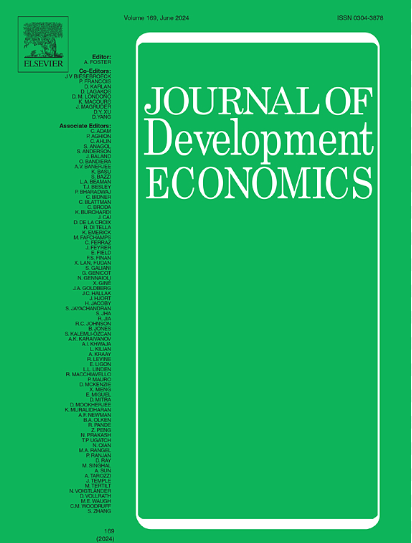How good are livestock statistics in Africa? Can nudging and direct counting improve the quality of livestock asset data?
IF 4.6
1区 经济学
Q1 ECONOMICS
引用次数: 0
Abstract
Livestock statistics in most low- and middle-income countries rely on self-reported, survey-based measures. However, respondents may have various challenges to accurately report livestock ownership. This study introduces a novel set of survey and measurement experiments to improve livestock statistics in Africa. We introduce two innovations to conventional livestock data collection methods. First, we address some of the sources of potential underreporting in livestock assets by introducing an explicit nudge to a random subset of survey respondents. Second, we arrange for direct counting of livestock assets by enumerators and local livestock experts. We demonstrate that self-reported data on livestock ownership suffer from significant and systematic underreporting. While our nudge affects only the reporting behaviour of households with larger stocks of livestock, direct counting increases total livestock ownership by 39 percent and the reported number of cattle by 43 percent. These impacts are evident at both the extensive and intensive margins of livestock asset ownership, as well as considering the number and value of livestock assets owned. Such mismeasurement in self-reported livestock data can lead to underestimation of the contribution of the livestock sector to national economies. Furthermore, direct counting generates important spillover effects to livestock species not explicitly counted in the survey. We finally show that underreporting in self-reported livestock data is systematic and hence consequential for statistical inferences. Our findings underscore that survey designs that can address specific sources of bias in self-reported livestock data can meaningfully improve livestock asset measurement in Africa.
非洲的牲畜统计数据有多好?轻推和直接计数能提高牲畜资产数据的质量吗?
大多数低收入和中等收入国家的牲畜统计依赖于自我报告的、基于调查的措施。然而,受访者在准确报告牲畜拥有量方面可能面临各种挑战。本研究介绍了一套新的调查和测量实验,以改善非洲的牲畜统计。我们介绍了传统牲畜数据收集方法的两项创新。首先,我们通过对随机调查对象子集进行明确的推动,解决了牲畜资产可能少报的一些原因。第二,我们安排由点算员和本地畜牧业专家直接清点牲畜资产。我们证明,牲畜拥有量的自我报告数据存在严重和系统性的少报。虽然我们的推动只影响牲畜存栏量较大的家庭的报告行为,但直接计数使牲畜总拥有量增加39%,报告的牛数增加43%。这些影响在畜牧资产拥有的粗放和集约边际以及所拥有畜牧资产的数量和价值方面都很明显。这种自我报告的牲畜数据的错误测量可能导致低估畜牧业对国民经济的贡献。此外,直接计数对调查中未明确计数的牲畜物种产生了重要的溢出效应。我们最后表明,自报牲畜数据的少报是系统性的,因此对统计推断是必然的。我们的研究结果强调,能够解决牲畜自我报告数据中特定偏差来源的调查设计可以有意地改善非洲的牲畜资产计量。
本文章由计算机程序翻译,如有差异,请以英文原文为准。
求助全文
约1分钟内获得全文
求助全文
来源期刊

Journal of Development Economics
ECONOMICS-
CiteScore
8.30
自引率
4.00%
发文量
126
审稿时长
72 days
期刊介绍:
The Journal of Development Economics publishes papers relating to all aspects of economic development - from immediate policy concerns to structural problems of underdevelopment. The emphasis is on quantitative or analytical work, which is relevant as well as intellectually stimulating.
 求助内容:
求助内容: 应助结果提醒方式:
应助结果提醒方式:


